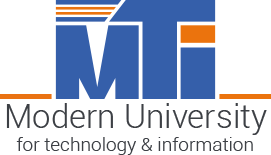
On behalf of the faculty, staff, and students I welcome you to the Faculty of Medicine, Modern University for Technology and Information
As the dean, I congratulate the students on making the most difficult decision that is to serve humanity through preparing themselves to be future physicians
Our medical program prepare our students to become leaders with the moral depth and intellectual intensity necessary to meet the future challenges. That focus informs everything we do, from admissions to curriculum design to teaching and mentoring
Creativity, compassion, and leadership are the qualities that we seek most in our future graduates as well as in our faculty, our administrators, and everyone else who has a hand in making our college
The success of our future physicians rest in the hands of our dedicated faculty members, and staff. They are eager to support and prepare our students to be safe efficient health care professional. I am grateful for their tireless work
On top of our priorities is ensuring a stimulating and exciting learning environment for all students and to inculcate a culture of innovation and research, aligned with a passion for expanding the boundaries of knowledge
We will strive to make a difference in our community, and we are stronger in our efforts and commitment that are at the core of our mission at MTI University
Thank you for being part of our MTI family. I wish you all the best
Professor. Ayman Elsayed Shafei
Dean of Faculty




































